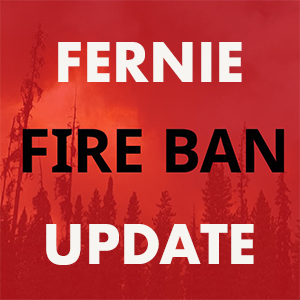
As there is still interest in the oil derrick it seems a good time to refresh people’s memories on how this popular landmark came to be. So, let us start at the beginning.
It’s June 1986 and there’s a lot of excitement about rescuing a Flathead oil rig for display at the weigh scales site in Fernie.
The project is gathering momentum with help from David Yager and BC Heritage trust, Shell Oil, and architect and project co-coordinator Eileen Fletcher
Ms. Fletcher comments, “The rig will create a landmark for Fernie, an anchor for identifying the city. It is a good step in the right direction toward making Fernie a goal for tourists”.
Ms. Fletcher is working with the many interested parties, Shell Oil, The Heritage Trust, BC Lotteries fund, the City of Fernie, MLA Terry Segarty and Fernie City Council.
April 2007, excitement abounds again regarding the same rig; this time tempers are high over removal and replacement with, “A more appropriate Fernie – related centre piece”.
This display hasn’t been formulated yet but then Chamber president Evelyn Cutts says “the goal is to develop a new display in its place which will attract visitors by compelling them to stop at the Visitor Centre’.
What has happened in two decades to bring about such opposing scenarios? Precisely nothing, and that is the problem.
When Akamina #2 was constructed with help from private, federal, provincial and local government, it was assumed ownership would provide upkeep. This had not occurred on a regular basis and in 2007 a site with strong historical roots sat in disarray with ugly chain link fencing surrounding the wood structure and original metal components. Tall weeds and grasses obstruct the artifacts and signage explaining what it is.
This was a scene not appreciated by the chamber manager of the day and who was to blame her, it was indeed a sorry sight to behold.
But removal of this historical artifact wasn’t something to be envisioned. So armed with information from the curator of the Canadian Museum of Civilization in Ottawa where several components of the rig are on perpetual loan and where a lot of information lies in regards to this oil derrick, a nonprofit society was formed to rehabilitate the site.
That Museum curator commented that this history was of great significance in the development of Western Canada adding that as a community, we should be very proud of this fact and do everything possible to preserve the derrick because “History belongs to tomorrow’s generations. We will never know who we are unless we know where we came from”.
Many citizens agreed, a petition to save the oil derrick was taken out with hundreds of signatures and society members worked diligently to make marked improvements to the site.

As a founding member of this society I worked on fundraising for this project and was successful in obtaining thirty thousand dollars in addition to in kind donations and thanks to our volunteers the wire fence was removed, the wood structure was inspected by engineer John Turcasso, parts of the derrick were secured, new railing and steps built, metal components were painted and displayed on a concrete base, landscaping was improved and new signage providing history of the derrick was installed.
The Free Press issues of July 18 – 22, 1986 state “A study by W.W. Boberg of Casper, Wyoming, says that oil seeps in the Flathead region had long been used by the local Indians for medical purposes. The seepage was rich in paraffin and served the same purposes as modern Vaseline, not only for themselves but for saddle galls on their horses. Trappers, travelers and farmers also used the oil seeps for medicinal and lubricating needs.”
According to Canadian Hunter Exploration Ltd. Calgary, Alberta, seeps on the BC-Alberta border were reported in 1874. Gunny sacks would be dipped into seeps, squeezed into containers and used as lamp fuel.
In 1892, the director general of Geological Survey of Canada came to confirm existence of seeps. This caused claim staking and drilling in BC and the US beginning in 1901 on unusually difficult ground.
Roads, bridges and rigs were built from native timber. The rough terrain proved difficult to overcome taking so long that some holes were never completed but at Akamina Creek, four miles north of the 49th parallel a quantity of dark green oil was found.
The search for oil leads brought people into the area; coal was discovered resulting in the Fernie townsite.

























